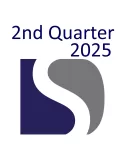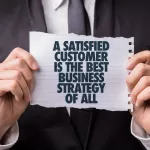Company culture is similar to what happens when you get together with your closest friends. You just get each other. Everyone understands what’s being said without saying it. You share core beliefs, but you also accept your differences. Your common purpose is to enjoy life – together.
As relationships grow, social contracts form, compelling us to act a certain way. Once these contracts have solidified, breaking them takes intense and explicit effort.
Company cultures are different because you won’t necessarily all have the same reasons for being there, but a good culture happens when you do. You share the same purpose as the company and you build personal relationships in the process. That’s how a team is created.
Poor company culture happens when people show up, do their job, and go home. No sense of a team exists. Simple consistency is a struggle with little hope for reinforcing efforts. People or cliques feel the need to defend themselves. Employees bargain for time and resources to make their jobs easier.
When the zero sum gain turns into a prisoner’s dilemma, bureaucracy takes root.
“It’s just how we do things around here”: the beginnings of culture and what influences it
Culture is a natural phenomenon that occurs when a group of people work together, and a subconscious convocation occurs where decisions, beliefs, and norms are established. People most often gravitate towards each other with a common purpose in mind. It could be for social reasons or because of the work that needs to be done.
It often starts as an explanation of ‘how we do things here.’ (I’ve witnessed several times where somebody, brand new to an organization, will talk about how ‘we’ do it this way because of something that happened years ago.) To be part of the group, some things are tolerated while others are not. Certain behaviors also imply whether you want to be a part of it.
Leadership is the biggest influence on company culture. If leadership does not recognize the differences between the culture and the site they lead, they often increase resistance to change. A strong purpose can help guide and bind people if they collectively agree on the purpose. However, letting the culture make decisions is like using fuzzy logic: the range of results will be wide and slow to respond. Without leadership, an organization will become inefficient at best.
Change the culture, or eliminate the bureaucracy?
Cultures within bureaucracies are closed off from voices or opinions that deviate from their norms. These closed networks purposely resist change and are impersonal to the people who rely on them; this is how nepotism and favoritism flourish.
A sign your company is vulnerable to cultural bureaucracies is if you respond with a person’s name when asked how certain tasks get done. For example, if the question “How do customer orders get entered into the system and prioritized?”, is answered with “Bob or Betty”, you may have a problem, especially if something doesn’t happen when they’re away. Leaders should strive to have their company become an institution. If not the entire company, at least the part of your business that powers revenue generation.
Fad change management programs aim to improve performance by changing cultures, but cultures are best left to change on their own by setting new expectations and developing structures to support and reinforce them. When productized solutions like Lean are used to drive change, ad hoc organizational structures are formed that change existing hierarchies.
It’s common knowledge that sweeping change wastes time and often fails. Instead of using a productized solution to improve or change a culture, what’s most effective is eliminating bureaucracy.
To avoid bureaucracies, companies must pave their own culture path
With culture in mind, leaders must avoid adopting another company’s business system; it is futile to emulate a company entirely, and imitation does not lead to sustainable performance.
Each organization must develop and standardize its unique way of creating, delivering, and capturing value. Relying on the strengths of their culture, leaders can then further create core and operative capabilities into the correct systems needed to satisfy customer demand.
Roger Martin has learned and shared three steering mechanisms to consider when changing cultures:
- The formal, strategic, and structural: organizational design, processes, policies, and systems
- Interpersonal interaction and relationships: changing the way people work together
- Cultural: changed by the improving interpersonal interactions and relationships
Without fostering the new ways for employees to work together, formal changes alone most often increase resistance to change. Being responsible for how your organization matures is the curator of evolutionary development.
Here are 4 quick tips to consider:
- Begin with group effort activities to learn what function they serve and should serve.
- Formalize key processes along the critical path of value creation.
- Make the subsystems of your business system intentional and transparent.
- Ensure they are at least simply consistent with the goal of them reinforcing each other, and the ultimate objective of optimization; this is developing your business system as an ecosystem, ensuring it is an adaptable economic engine.
My experience in getting a culture to change is done by setting appropriate expectations, pulling the right organizational design levers, and being there when deciding whether to do it the old way or the new way. Individually and collectively, the group will adapt, and if done constructively, their new beliefs and characteristics will be positive.







